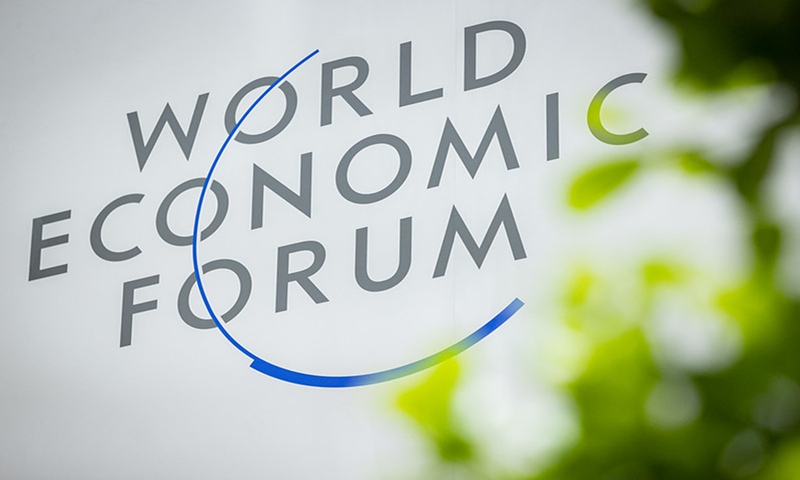Blame game for ‘debt trap’ is never productive: official
Green development has become a benchmark of China-proposed Belt and Road Initiative (BRI) over the past 10 years, officials and entrepreneurs said at the 14th Annual Meeting of the New Champions, also known as the Summer Davos Forum, in North China’s Tianjin Municipality on Tuesday, noting that infrastructure construction under the framework has connected the world together and brought lots of development opportunities for countries along the route.
On the sidelines of the economic forum, some officials also slammed the so-called debt trap allegations by some Western media outlets, noting that blame game is never productive, and the BRI is indispensable for local development.
Ten years on, the BRI has attracted the participation of more than 75 percent of the world’s countries and major international organizations, and the relevant concepts have been written into the related outcome documents of the UN and other multilateral mechanisms, Liang Linchong, an official with the National Development and Reform Commission, China’s top economic planner, said during a session of the forum on Tuesday.
He enumerated some achievements of the initiative during the last 10 years, including the Luban Workshop, a Chinese vocational workshop program training talents in over 20 countries and regions, the China-Pakistan Economic Corridor, which had created 236,000 jobs by the end of 2022, as well as the China-Laos Railway, a “golden corridor” that has sent 16.4 million passenger trips and 21 million tons of cargo since its operation.
Liang added that based on the connectivity in terms of policy coordination, road travel, trade, financial flows and people-to-people exchanges, China has stepped up efforts in the construction of a healthy, digital, green and innovative Silk Road, which has fostered new growth points for global development.
Sebastian Kurz, former Federal Chancellor of Austria, expressed his support for the initiative, saying that it is one of the most important initiatives in the world today as it has opened a lot of opportunities for cooperation between China and other countries.
However, in the last few years, we also saw the increase of tensions and unfortunately the idea of ‘decoupling.’ From my perspective, I hope the BRI, as a driver for [world] economic growth, will be possible to reduce tensions between the East and the West, Kurz noted.
Kurz added that the BRI has played a vital role in Austria’s green transformation, and China and the European countries have large cooperation potential in electric vehicles in the future.
Sekai Irene Nzenza, Minister of Industry and Commerce of Zimbabwe, also stressed the BRI’s role in her country’s economic transition, adding that the country has a large power shortage and relies more on solar power, so it needs investment in solar and wind power to reduce carbon emissions.
Over the past 10 years, China has cooperated with more than 100 countries and regions on green energy projects, and has invested more in green and low-carbon energy than traditional energy in the countries along the route.
“Green is becoming one of the most vibrant colors of the BRI, and the future cooperation in energy transition has unlimited opportunities,” said Xin Bao’an, Executive Chairman of the State Grid Corporation of China.
China has already built the world’s largest clean power generation system, especially its new energy generation has exceeded 800 million kilowatts of installed capacity, which is far ahead of the rest of the world. “We not only have new energy technology, we also have high-quality products, so the initiative can provide countries with large-scale new-energy development solutions,” Xin noted.
Talsiman Huo, Brand General Manager of LONGi Green Energy Technology Co., told the Global Times in an exclusive interview on Tuesday that the company’s overseas photovoltaic business is targeting the booming markets of Central and East African countries, and has new factories in Vietnam and Malaysia, continuously providing low-carbon products to promote the world’s green transition.
As the BRI has reaped fruitful results during the decade, some discordant voices have also been raised, including the so-called debt trap as well as unqualified projects in the countries along the route.
In response, Thomas Lembong, director of Singapore-based Consilience Policy Institute and former Indonesian minister of trade, told the Global Times that the BRI is very important in terms of providing financing to developing countries, and they would otherwise struggle to secure funding for infrastructure projects.
“For anyone who is in any lending difficulties, we always have to remember that there’re two parties, the borrower and the lender, so it’s absurd to blame only one party auditor.”
“Blame game is never productive. The constructive way forward is to work on solutions including restructuring, tuning projects and approaches,” he noted.
Nzenza also told the Global Times on the sidelines that in fact, Zimbabwe does have an investment and technology agreement with China. “And already we’ve got some remarkable infrastructure projects, so we are very excited and ready to embrace BRI in Zimbabwe.”
(Global Times)




